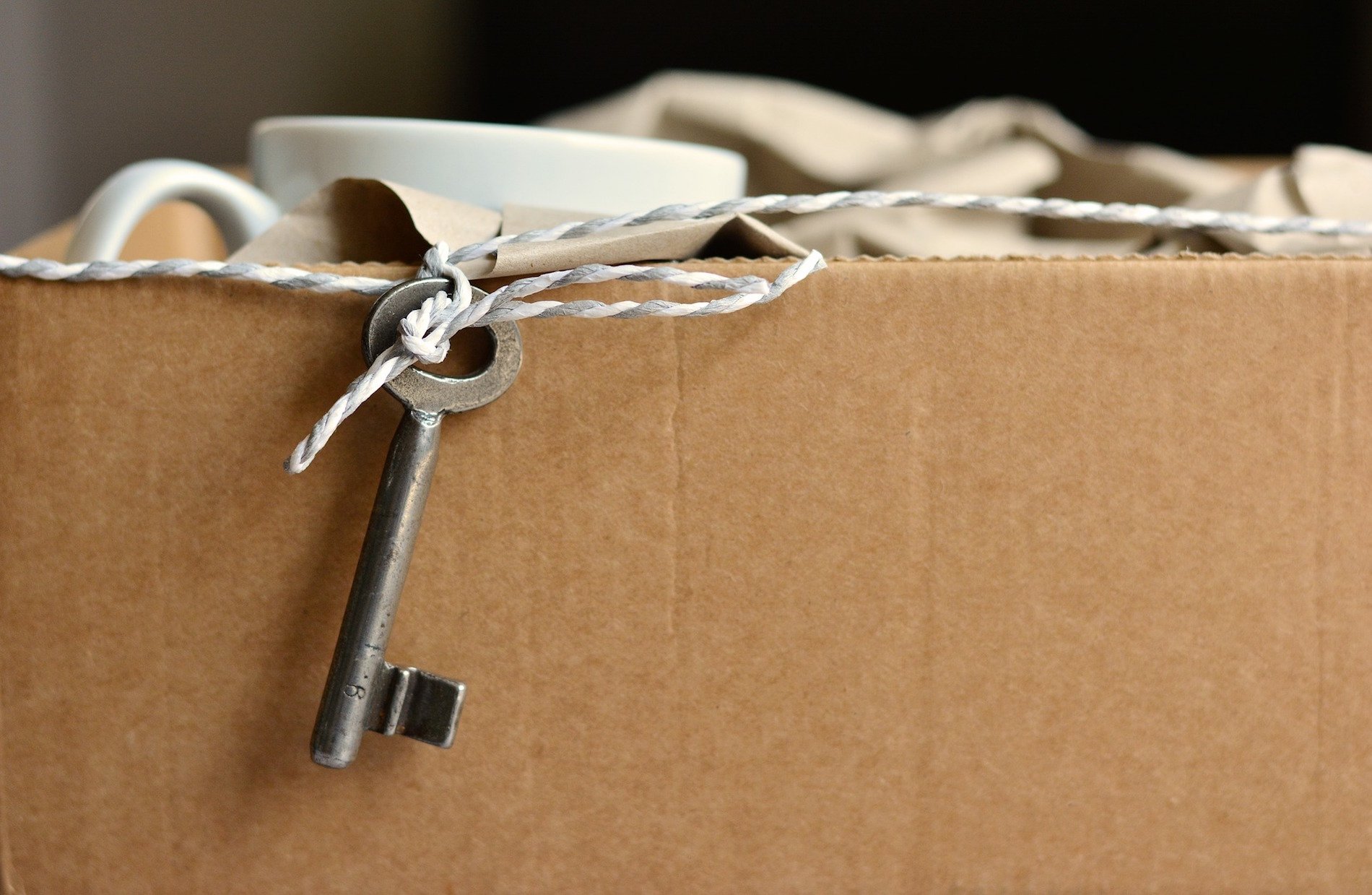For those facing a move in the near future, a little bit of planning and preparation really will save you a lot of extra work and stress and will make for a more successful (and maybe even less expensive) moving day.
This is not an all-inclusive list, but we have tried to share the moving and packing ideas we found most beneficial during our personal moves. Do you have a favorite time-saver or hack that wasn’t listed? We’d love to hear it.
Making a timeline will help keep your preparations on track. Here’s one to get you started, although it may need to be customized depending on your circumstances.
3 Months Before The Move:
- In the event of long-distance moves, make travel arrangements as soon as you have determined your moving date.
- If possible, get a floor plan of your new home, room dimensions, and other measurements you may need. Decide which items will go in which rooms ahead of time, to save time on moving day.
- Clean out anything that will not be moved to the new house (sell what you can to help with expenses after you move, donate gently used items to charity, recycle old magazines, shred outdated paperwork). Now is also the time to return any borrowed items (cake pans, library books, etc.) to their rightful owners. If you’re selling your existing home, all this will help when it comes time to stage it.
- Make an inventory of your household contents and photograph any breakable and valuable items before they get packed in the event an insurance claim becomes necessary due to damage or theft during the move.
- Start using up food from your freezer and refrigerator, and dispose of expired food, so you’ll have as little as possible to worry about keeping cold during the move.
- Start collecting sturdy boxes, mostly medium size, although you’ll want smaller boxes for heavier items such as books.
- Go ahead and pack up items you don’t use often, such as photographs, home décor accessories, and the rarely used kitchen items.
- Start a folder to leave behind for the new owners of your home, including warranties, paint chips, appliance manuals, etc. Consider leaving your new contact info in case of any mail or deliveries which need to be forwarded.
- If you live in a condo, discuss the development’s moving policy with your property manager and make any necessary arrangements, such as reserving an elevator and loading dock.
- Inevitably, there will be added expenses after your move (curtains, shelf liner, paint, etc.) so go ahead and start a “fixing up the house” savings fund now. You’ll be glad you did when all those little expenses start adding up.
1 Month Before The Move:
- Secure a moving company and/or truck rental. With moving companies, communication is key! Be clear about your expectations and requirements and their policy and procedures. (How is their time charged? Are they licensed and insured? What does the insurance coverage exclude? Which items will you expect them to pack if any? Are there any items they’re not allowed to move? Will they move the dresser as is, or should you unload the drawers first? Have you made them aware of any overly heavy items, such as pianos and refrigerators, that will be moved, or items that will have to be disassembled? How will access restrictions, such as narrow sidewalks, stairs, and loading docks, be handled? Will there be overnight storage involved in the move?) Working out all these details on the front end should save money in the long run, as unforeseen issues on moving day run into extra time and money.
- If considering a DIY move, reserve your rental truck and confirm rates, insurance coverage on your contents, and other pertinent policies and details. Coordinate friends/family members helping with the move, and try to schedule them in shifts (the first group helping to load up the truck and move out, and the second group helping to unload the truck and move in). People generally volunteer their time quicker if they don’t have to give up an entire day.
- Schedule a transfer of utilities, trash pickup, cable tv, and internet, as well as homeowners insurance.
- Schedule a change of address with the post office, and notify family, friends, insurance agents, creditors, healthcare providers, bank and investment brokers, accountants, employers, Social Security Administration, and IRS of the address change. You’ll also need to change your driver’s license address and voter registration. And don’t forget to redirect any newspaper or magazine subscriptions to your new address.
- Schedule a locksmith to change the locks on your new home immediately after your moving day since you don’t know who has keys to the old locks.
- If you’ve purchased furniture or other items to be delivered to your new home, delay deliveries until after moving day to minimize the congestion between movers and delivery people.
1 Week Before The Move:
- Confirm the date and time of your move with the moving company, or truck rental agency.
- Work out the route from your current home to your new home, checking for any road closures, low bridges, weight restrictions, and other issues along the route on moving day.
- If you’re moving a computer, quickly back up important files and leave the backup in a safe place, such as a bank lockbox or trusted family member, until you get moved.
- Research pizza joints or other restaurants near your new home with take-out or delivery for dinner options at the end of your moving day. Unless you’re some kind of superhero, you will not feel like preparing a meal for your family and volunteers.
1 Night Before The Move:
- If you are lucky enough to have access to your new home before moving day, go ahead and hang a shower curtain and stock the bathroom with toilet paper, soap, towels, and other necessities to get a hot shower at the end of your move. Also, deliver a box of paper plates, cups, paper towels, garbage bags, light bulbs, flashlights, and basic cleaning supplies. If you will not have access until the actual move date, at least pack these items in a separate box, properly labeled, and take them with you in your personal vehicle so they’ll be easy to get to when you need them.
- Pack a bag of essentials, such as prescription medications, toothbrushes, and toothpaste, and a change of clothes for each family member, as well as bedding so the beds can be made as soon as they’re set up in the new home.
- Prepare some sandwiches, chips or fruit snacks, bottled water, paper plates, and utensils to be packed in a cooler for moving day since time quickly gets away from you. Be sure to have extras for your movers.
- Get your clothes ready for moving day. Go for comfort, both clothes, and shoes. Also, layers are a good idea, as it’s natural to heat up as the day goes on, especially in warmer weather. In the midst of a move, finding a change of clothes will be nearly impossible if you get uncomfortable.
- Charge your cell phone. You’ll need it to communicate with movers, child care, and other people involved in the move, as well as for GPS, food delivery, etc.
- This may be obvious, but get a good night’s sleep before moving day. No matter how much planning ahead you do, the actual day of the move is always a long and tiring day.
On Moving Day:
- Wake up early enough to have a good breakfast and get the day started without being in a frantic rush by the time the movers or volunteers arrive.
- If moving your refrigerator, it should be the last item loaded onto the truck, and the first item unloaded at your new place, which will reduce the time any refrigerated foods are left in a cooler.
- Before leaving your old home for the last time, look around the rooms to ensure you haven’t left any phone and computer chargers, nightlights, or other devices plugged in. Photograph each room to show the condition you’re leaving it in for its new occupants, and close and lock all doors and windows. It’s also a good idea to take pictures of the water, electricity, and gas meters before you leave.
- Upon arriving at your new home, take photos of water, electricity, and gas meters.
- Start off on the right foot with your new neighbors by making sure you and your movers don’t block any driveways or sidewalks that aren’t yours.
- Prioritize setting up your bed in your new home as early in the day as possible. You will appreciate you did this by the end of the night!
Here’s a list of packing tips and tricks to make for a smoother move:
- If possible, splurge on packing paper rather than newspaper, which leaves ink smudges on everything. This relatively small expense will save you the time of having to wash everything as you unpack.
- Use the largest boxes for the lightest items and vice versa, saving the smallest boxes for books and other small but heavy items.
- Wardrobe boxes can be purchased, or if you’ll be moving your clothes yourself, slide hanging clothes into a trash bag while they’re still on the hangers to keep them clean while transporting them to your new closet.
- Number boxes and have a separate sheet with items inventoried by the corresponding box number. You can also color code your boxes and then tape a sheet of that colored paper on the corresponding door at the new house, so movers will know which room to unload them. Regardless of your method, number, and/or code, the sides of the boxes, preferably all four sides, so you’ll be able to identify them at a glance when they’re stacked.
- Rather than packing stacks of towels and blankets into one or two boxes, use them to wrap breakables or fill space in other boxes.
- Your luggage must be moved anyway, so why not pack it with extra linens, blankets, and clothes?
- Before unhooking cables to electronics, take a picture to refer to when it’s time to reconnect them at your new home. Consider packing all cables and cords for electronics in one box, each set secured with a zip tie and labeled. For any items that must be disassembled before moving, store loose screws, washers, and other small pieces in labeled plastic bags.
- Security risks are greater with doors to your home and moving truck open on moving day. If possible, store jewelry, valuables, and important financial documents at a family member’s home or in a bank lockbox until you get settled into your new home.
- In the days leading up to your move, double and triple check those out-of-sight places, such as top shelves of closets, storage sheds, attic, and crawl space, where you might have items stored, to make sure you’re not leaving anything behind.
And finally, when it’s not all about you:
For those of you with small children, you may want to consider arranging for childcare during moving day so you can focus on the task at hand. If childcare is not an option, or if you would like your children to be involved on moving day, a little planning ahead will go a long way. Be sure to have snacks and activities, such as games or books, handy. Consider having each child pack his/her own box to include a favorite doll or stuffed animal, a couple of toys, a book to read, a reading lamp or nightlight, and pajamas, and pack each box in your personal vehicle, so it’s easy to grab when you get to the new home.
Please check out our Moving With Pets guide for those with pets.
If you’ve read this far, you’re probably pretty seriously contemplating a move in the near future. We’re here for you if you have any questions or need help selling your current home and/or finding your dream home!
Bonus: Have you ever found a product or service you were so impressed with that you wanted to shout about it from the rooftops? Whether you’re using a moving company or moving yourself, we would urge you to consider renting preassembled and crushproof plastic moving bins, such as those available through www.bin-it.com. By the time you buy packing boxes and tape, the cost of bin rental is comparable. You choose how many bins you want and how long you want them, and they’ll be delivered (with a dolly, zip ties, and labels) to your door and picked up when at the end of the rental period (2-4 weeks).




